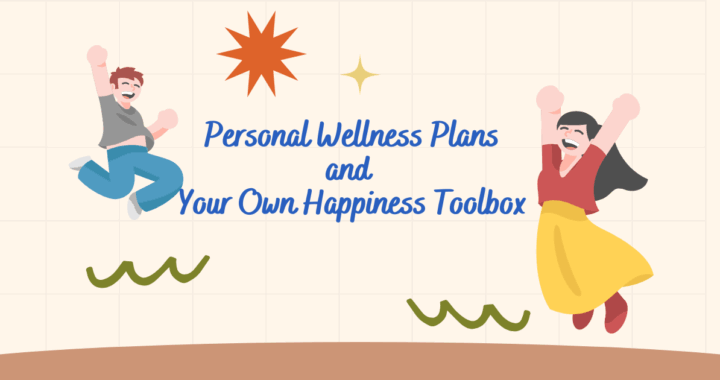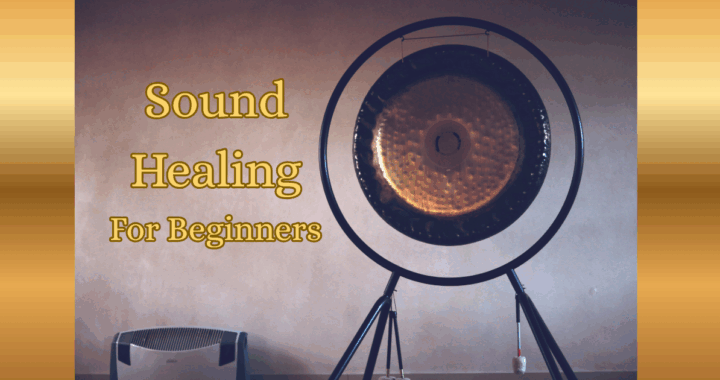Breathing – we all do it no matter what our age, religion, gender or culture! It’s truly the vital thing that gives us life. We can survive for approximately 3 weeks without food before we really start feeling the effects, 3 days without water and about 3 minutes without breathing! Breathing is truly our life-giving power and yet so many of us don’t give it any thought at all. Starting breathwork is a great way to add to your meditation practice above and beyond just closing your eyes and clearing your mind.
In this article, you’ll learn about the benefits you can expect, and just how to get started! There are insights from respected experts such as James Nestor and Wim Hof. My intention is to help anyone interested start a regular breathwork practice with confidence.
Personal experience
I have found that exploring breathwork can be a deeply enriching experience. Breathwork is a collection of practices centred on conscious breathing to improve well-being and reduce stress. Back in the mid-2000s, I went to a retreat centre in Italy called The Hill that Breathes” run by the best-selling authors of The F**K It Life books, John and Gaia. You can read more of their experience of giving up the stress of everyday living on their website here.
When there, I learned about the practice of Qi Gong, (also spelled Qigong) which is an ancient Chinese practice that combines gentle physical movements, controlled breathing, and meditation to cultivate and balance the body’s vital energy, known as “Qi” (pronounced ‘chee’). It is deeply rooted in Traditional Chinese Medicine (TCM) and has been used for thousands of years to enhance physical and mental well-being. This set me on a path to breathwork practice that I’ve continued to this day and I want to share a little of that knowledge here.
So, thank you John and Gaia!
 This article contains affiliate links.
This article contains affiliate links.
Foundations of breathwork for beginners
Breathwork involves taking deliberate control of your breathing patterns. With a focus on slow, deep breaths, this practice can calm the mind and relax the body. I learned that a consistent routine can lower anxiety and improve concentration. Research by experts in respiratory science supports these benefits. For instance, James Nestor has explained how conscious breathing improves both physical and mental well-being. His book, Breath: The New Science of a Lost Art, dives deep into how our breathing habits have evolved (and sometimes deteriorated) over time. He combines historical insights, scientific research, and personal experiments to uncover the profound effects of breathing on physical and mental health.
Some key points he emphasises are:
- The importance of nasal breathing over mouth breathing for better filtration and oxygenation.
- The benefits of slow, rhythmic breathing to reduce stress and promote overall health which engages the parasympathetic nervous system, the part that counteracts your ‘freeze-fight-flight response’
- The potential of breath-holding techniques to increase lung capacity and resilience.
He also sheds light on ancient practices like Pranayama (from yoga) and Buteyko breathing, connecting them to modern scientific findings.
You do not need expensive equipment to get started. All you really need is a quiet spot, a comfortable seat, and an open mind. Over time, this habit can fit neatly into your daily routine, helping you manage stress and improve your overall wellness. I encourage anyone interested in similar wellness practices to explore more through some of our other articles that are linked at the bottom of this one.
Other advocates of breathing and meditation include Dr Joe Dispenza who is a best-selling author and runs meditations and retreats.

Essential techniques and tools for breathwork
Over the years I’ve learned that the correct techniques can transform a simple breathing exercise into a powerful tool for balance. Beginners might consider trying these popular techniques which help when you are starting out:
- Diaphragmatic breathing: Breathing deeply into your diaphragm helps trigger the body’s relaxation response.
- Box breathing: In this method you inhale, hold the breath, exhale, and hold again. I use this technique to create a calm, structured rhythm.
- 4-7-8 technique: For this exercise, inhale through the nose for 4 seconds, hold for 7 seconds, and exhale for 8 seconds. It can be very useful when you feel stressed or anxious.
These techniques lay the groundwork for expanding your practice. Everyone will respond differently, so trying several methods can help you find the one that really fits you and how you like to do things.
How to begin your breathwork adventure
Starting with breathwork requires a practical, gradual approach but consistent practice can lead to noticeable benefits over time. I began by setting aside 10 to 15 minutes each day in a quiet space. This simple routine allowed me to focus on my breathing and become aware of my body’s sensations. There are many benefits to meditation which you will find once you start to practice.
Early sessions might feel unusual if you are not used to focusing solely on your breath. To ease into the practice, consider these steps:
- Create a dedicated space: Choose a small area free from distractions—a room corner or even a quiet spot outdoors—where you feel safe and relaxed.
- Set a fixed time: Pick a time when you are least likely to be disturbed. I prefer early mornings or later in the evenings when the day’s noise has faded (and my children are usually in bed!) Schedule the time in, but be flexible if you need to be.
- Start slowly: Begin with short sessions of 5 to 10 minutes and gradually build up the duration as you feel more comfortable.
- Keep a journal: Noting down your post-session feelings can help you track progress and notice subtle improvements over time. In later practices, you can set different intentions such as meeting spirit guides or getting answers to questions, but when you start, it’s best to just keep your mind clear.
Remember to be patient with yourself. Breathwork, like any new practice, takes time and regular effort to yield lasting benefits.

Practical exercises for beginners
For those new to breathwork, here are some simple exercises that I use in my routine. These exercises are meant to be straightforward and effective.
Exercise: Diaphragmatic breathing
Sit comfortably with your back straight. Place one hand on your chest and the other on your abdomen. Inhale slowly through your nose so that your abdomen rises while your chest stays relatively still. Then exhale through your mouth, consciously letting the air flow out. Practising this for about 5 minutes can help ease tension and clear your thoughts. As you develop this practice, you can push in or contract your diaphragm on the exhale, pushing out the last of your breath.
Exercise: Box breathing
Sit in a relaxed position. Inhale through your nose counting to 4, hold your breath for 4, exhale slowly through your mouth for 4, and then pause for 4 seconds holding your breath; then exhale through your mouth for 4, and then pause again before repeating. Do this cycle 4 to 6 times. I find this method effective in calming nerves during busy moments and you can do it anywhere: in the car, on the bus or even take yourself to the bathroom and find a few moments to quiet your mind without anyone missing you!
Exercise: 4-7-8 Breathing technique
This is similar to the box breathing exercise although the timings vary. Close your eyes and focus on your breathing. Inhale for 4 seconds through your nose, hold for 7 seconds, then exhale fully through your mouth for 8 seconds. This technique, which I often practice before bed, can lead to a deeper, more restful sleep. Repeat the cycle 4 to 8 times to experience its benefits.
These exercises are excellent ways to incorporate mindfulness into your daily routine. With growing confidence, you might even experiment with variations or combine techniques to create a routine that suits you best.

Potential challenges and considerations
No new practice is without challenges, and breathwork is no exception. In my experience, there have been moments when distractions or slight discomfort made it hard to maintain focus. That’s why I suggest a time when you won’t be disturbed by your children, family or pets! I love my cats but they can break the flow and startle you if they jump on you when you’re practising your breathwork!
Other challenges can be managed with a few adjustments and persistence.
- Mental Distractions: It is common for the mind to wander during breathing exercises. When this happens, gently bring your focus back to your breath. With regular practice, maintaining focus gets easier.
- Physical Discomfort: Some people may experience lightheadedness when practising deep breathing. Starting slowly and gradually increasing the duration can help your body adjust comfortably.
- Overbreathing: Breathing too rapidly might lead to hyperventilation. Following the instructions closely and keeping the pace slow and natural usually prevents discomfort.
Listening to your body is very important. Crafting a balanced practice with room for adjustments ensures that breathwork remains beneficial without causing extra stress.
Managing expectations
While the rewards of breathwork are real and can have an immediate impact on your nervous system and feelings of panic or being overwhelmed, longer-term and sustained results occur through practice and repetition.
Daily commitment over several weeks tends to bring gradual improvements in stress relief, mental clarity and anxiety. Studies show that regular practice can also bring about changes in your immune system and other holistic body systems. Experts like Wim Hof emphasise that persistence in breathwork will boost overall health and resilience. Recognising that these longer-term benefits take time, helps set realistic expectations.

Starting breathwork: Advanced tips and techniques
Once you are comfortable with basic breathing exercises, exploring more advanced practices can be rewarding. I have enjoyed combining breathwork with meditation and light physical movement to increase the overall experience.
Integrate with meditation: Often, I combine breathwork with a quiet meditation session. Sit quietly, focus on your breath, and notice the sensations throughout your body. This blend deepens mindfulness and helps you connect with your inner self. More meditation techniques can be found on thecreativechoice.org.
Sync with movement: Some methods involve coordinating breathwork with gentle stretching or yoga poses. This combination gives a boost to relaxation and mental clarity. I find that moving slowly while breathing consciously creates a powerful, calming effect. This is the basis behind Qi Gong and Tai Chi.
Record your progress: Keeping a log of your sessions can help you notice improvements and understand which techniques best support your practice. Recording the time, duration, and how you feel afterwards can lend insights and boost motivation.
Experiment with wound and rhythm: Adding soft, calming music or natural ambient sounds can sometimes enrich your sessions. When starting a breathing practice, you may prefer to follow a guided meditation which gives you something to focus on. I use a variety of different guides, music and silence usually depending on my mood. You might check out various soundscapes suggested on reputable wellness sites for ideas.
Different nasal techniques: More advanced practices can alternate breathing through different nostrils but I would begin with more simple techniques when you start out.
These advanced approaches build on the basic exercises, and every additional layer can unlock further benefits and bring a deeper sense of awareness to your daily life.
Starting breathwork: FAQs
I’ve listed here a few common questions often asked by those starting a breathwork practice, and the answers of course! 🙂
Question: What exactly is breathwork?
Answer: Breathwork refers to techniques that direct your breathing patterns to improve physical and mental health. It includes methods such as diaphragmatic breathing, box breathing, and the 4-7-8 technique.
Question: How long should I practice breathwork initially?
Answer: It is best to start with 5 to 10 minutes daily. As you become more comfortable, you can gradually extend the session length and you can practice for up to an hour or more provided you have time in your schedule.
Question: Can breathwork help with stress and anxiety?
Answer: Many studies and expert opinions, including those from James Nestor and Dr Joe Dispenza, indicate that a regular breathwork practice can lower stress and reduce anxiety. Though it is not a cure-all, it is a very important part of a broader wellness routine.
Question: Are there any risks associated with breathwork?
Answer: Breathwork is generally safe. However, beginners should avoid extended breath-holding to prevent lightheadedness or hyperventilation. If you have any concerns, it is wise to consult a healthcare professional before beginning.
Bringing it all together when starting breathwork
Breathwork offers a simple yet effective way to gain mental clarity and manage stress. Regular practice creates both physical relaxation and a focused mind. A dedicated focus on your breath can provide a needed pause from a hectic day.
Remember to go at your own pace and adjust techniques to suit your comfort level. I have appreciated the process of finding which methods truly resonate with my body and mind. Over time, the positive changes become apparent, bringing balance to daily life.
By incorporating easy techniques, practical exercises, and insights from experts, breathwork can become a valuable element of your everyday routine. I invite you to explore more on thecreativechoice.org to find additional information and inspiration. Enjoy the benefits that mindful breathing can bring, both to your physical health and to your emotional resilience and clarity of thought.
Related articles
Beginner’s guide to meditation and its benefits





Breathwork is such a powerful yet often overlooked tool for improving well-being. This article does a fantastic job of explaining not only why conscious breathing is important but also how to get started with practical, beginner-friendly techniques. I love how it references experts like James Nestor and Wim Hof while also sharing personal experiences—it makes the practice feel accessible and relatable. The breakdown of different methods, from diaphragmatic breathing to the 4-7-8 technique, is especially helpful for those new to breathwork. Plus, the emphasis on patience and gradual progress is a great reminder that small, consistent steps lead to long-term benefits. Whether for stress relief, mindfulness, or better health, breathwork is something everyone can incorporate into their daily routine. Thank you for this insightful and informative guide—definitely bookmarking this for future reference!
Hi Andre,
Thanks very much for taking the time to read the article and give your thoughts. I’m glad that you found it useful, especially for beginners. I hope that you find the time to do some breathwork yourself because I can personally recommend it for the many benefits it brings. Looking forward to seeing you back again soon too.
This was such a refreshing read—thank you, Gail. It’s incredible how something as simple and natural as breathing can become such a powerful tool once we learn to work with it consciously. I’ve been experimenting with box breathing and 4-7-8 lately, especially before bed or during stressful moments at work, and it’s made a noticeable difference.
I’m curious—have you found certain times of day (like early morning vs. evening) work better for breathwork in terms of clarity or energy levels? I’m still finding what rhythm fits best in my daily routine.
Hi Vlad. Thanks for your kind comments here and I’m glad that you are experimenting yourself with different breathing techniques and have found that it makes a difference. It’s amazing to think, as you say, that something so simple and free can be so effective. I think that because we live in a society driven by consumerism, we are taught and sometimes brainwashed into thinking that the answer to all our problems lies outside of us, when in reality, everything we need is within us.
To answer your question, I like to do breathwork in the morning before everything gets a bit manic as it grounds me and lets me figure out what I really want to achieve in that day. I also do some last thing at night to reflect on my day and to end with a practice of gratitude as well. And, if I ever feel the stress levels rising, I’m straight into my breathing techniques to help. I’ve also found that tapping helps here too. You can read more on my article about tapping here.